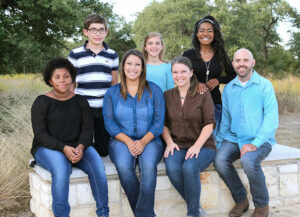Everyone Can Play a Part
We desperately need more foster and adoptive families, but change doesn’t stop there. We know the task can be overwhelming, so we have identified 5 major areas of need within the foster care system. When there is adequate support and volunteers within all these 5 categories, then we can confidently say that we are working to solve the foster care crisis. What role will you play?

-
After ensuring safety, the State’s top priority is to return children to their families
-
The child welfare system alone cannot meet the needs of children and families. DFPS partners and local congregations are needed to help develop ministries
-
Over half the children in care will return to their biological families
-
Many children in foster care have parents who were also in foster care

-
In 2021, there were over 1,600 children in foster care in Travis County alone
-
More than a third of foster children have two or more placements each year
-
Children in care move an average of 6 times
-
Moving and inconsistent care causes trauma in addition to the child’s original abusive environment

-
Adoption from the foster care system costs little to nothing
-
Minority ethnic group children over 2 years old have a greater risk of aging out of the system than being adopted
-
More than half of the adoptions from Texas foster care were by relatives
-
All children will have trauma, but they can reach dramatic levels of healing with trauma-informed parenting

-
There are many opportunities to serve foster and adoptive families including babysitting certification, CASA, meals, mentoring, prayer, financial support for camps, sports, backpack drives, compassion for foster/adoption families, etc.
-
Healing can take place through trauma-informed, nurturing, long-term relationships

- At the age of 18, teens are given the option to remain in foster care until they are 21 or they can leave care
- Up to 40% of youth experience homelessness within the first year of aging out and 20% become instantly homeless
- 70% are pregnant by their 21st birthday
- 1 in 5 foster youth are incarcerated by the time they are 19
Find Your Role
Families are the primary source of healing for hurting children. Whether you’re a foster or adoptive parent or want to support those who are, your role is vital to fostering hope and healing in the life of a child with difficult beginnings.
Ben and Emily Coussen, Foster to Adopt Family
Support has been what has kept us able to get up in the morning. Our close circle of friends, family, and church family that compile our support system, helped with Dr. appointments, childcare during court dates, meals when the kids were sick or when we were just placed with them. Our support system also prayed for us constantly. There is no way we would have been able to progress from first time foster parents straight through unrelated adoption without our support.
Brett Millican, Adoptive Dad
Fostering Hope has given me the confidence and tools to be confident on how I can lead [my child] through her moments in a way that connects, instead of getting frustrated.
Beverly Morris, Kinship Guardian
Once I started taking classes with Fostering Hope and I learned to deal with their behavioral issues, that's when everything changed.

